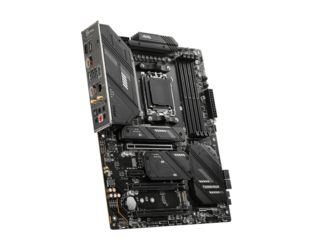Hello,
I'll be buying an AM5 board and the one thing I can't figure out is would it be ok to place an SSD below the graphics card. The board I'm eyeing is MSI X670E Tomahawk, which has a PCIE 5 m.2 slot above the graphics slot and 2 PCIE 4 m.2 slots below it. Right now I have 970 Evo plus so when I buy a gen 4 or gen 5 SSD the 970 Evo will go to the slower slot, but is the heatsink provided enough to keep the temps low enough? Like, can it prevent throttling? I have 7800XT which pulls close to 300W, so it must be pretty hot down there.

I'll be buying an AM5 board and the one thing I can't figure out is would it be ok to place an SSD below the graphics card. The board I'm eyeing is MSI X670E Tomahawk, which has a PCIE 5 m.2 slot above the graphics slot and 2 PCIE 4 m.2 slots below it. Right now I have 970 Evo plus so when I buy a gen 4 or gen 5 SSD the 970 Evo will go to the slower slot, but is the heatsink provided enough to keep the temps low enough? Like, can it prevent throttling? I have 7800XT which pulls close to 300W, so it must be pretty hot down there.
